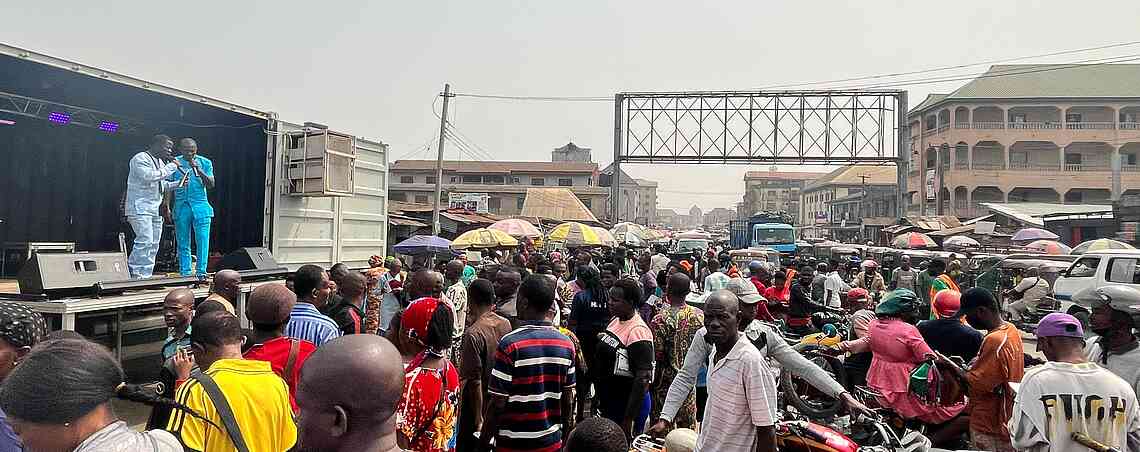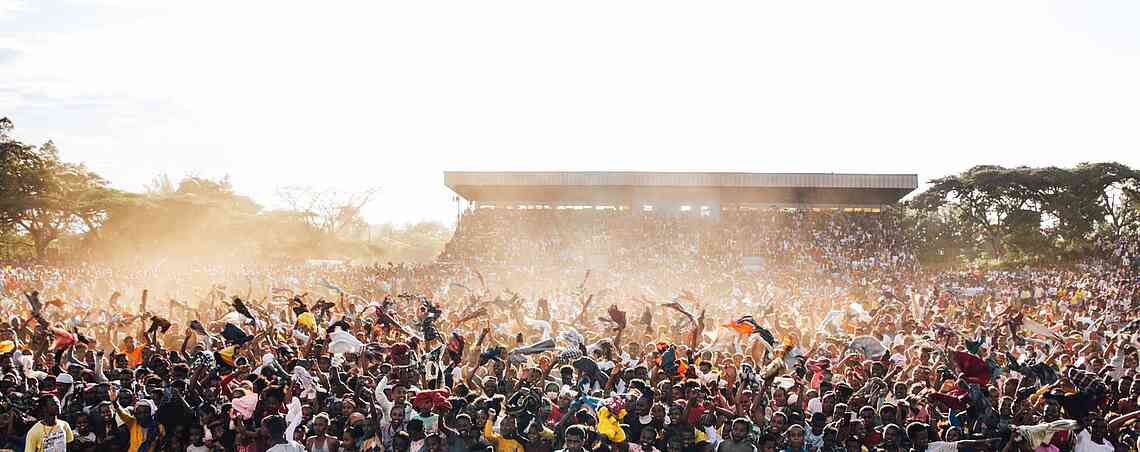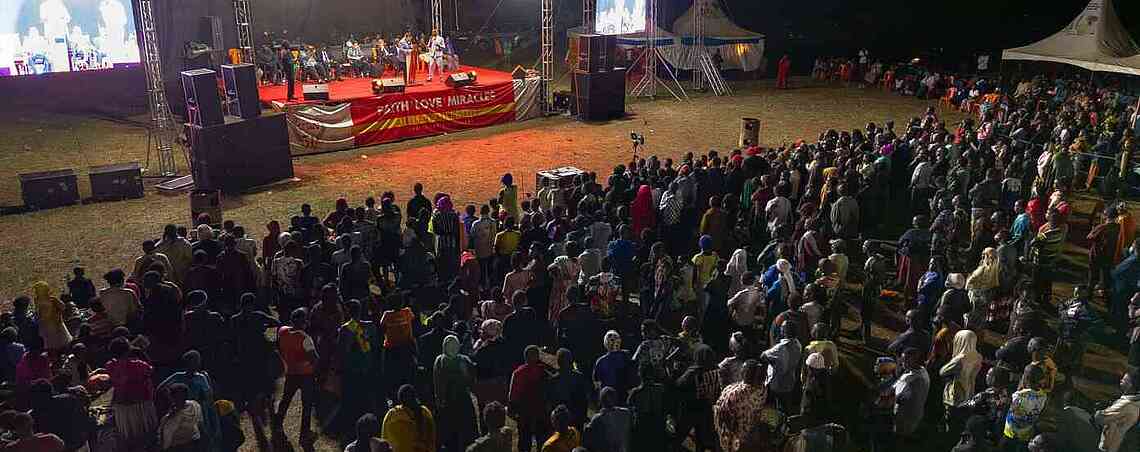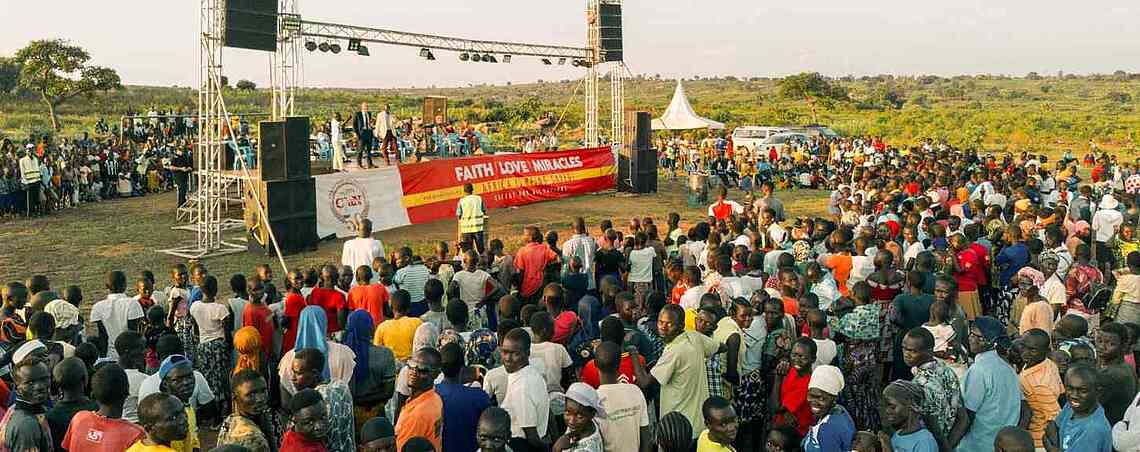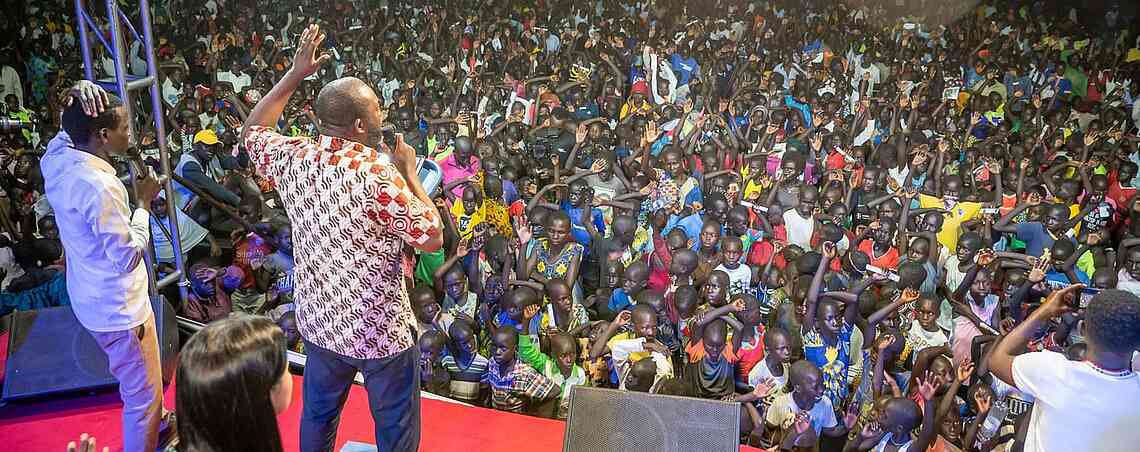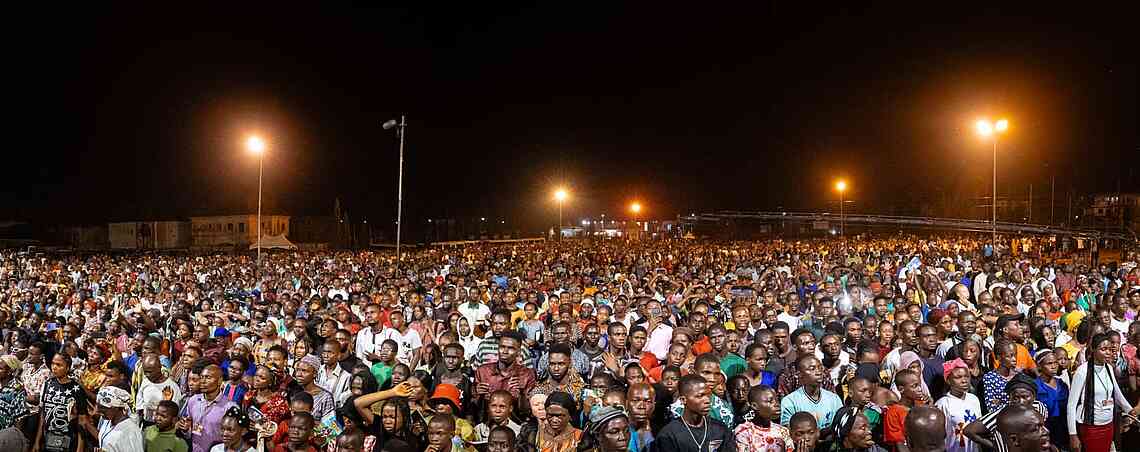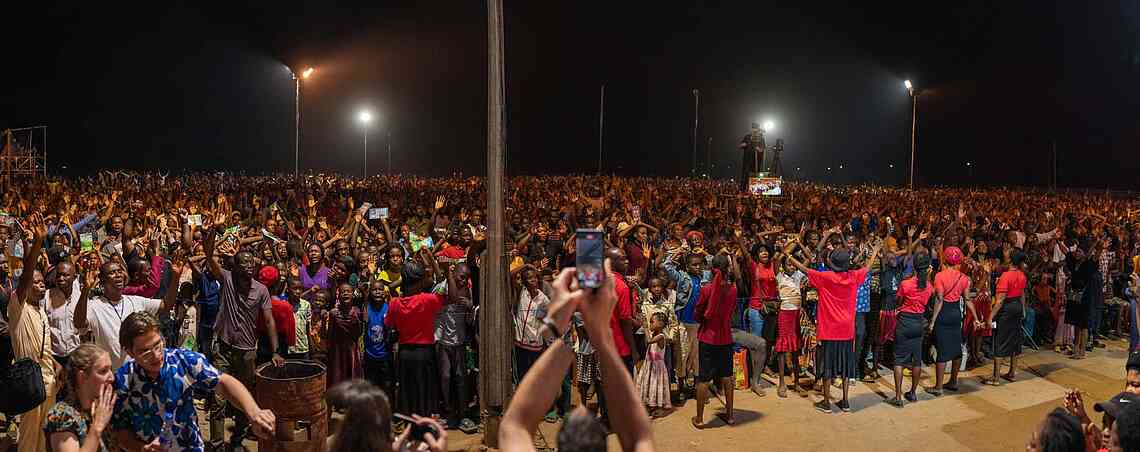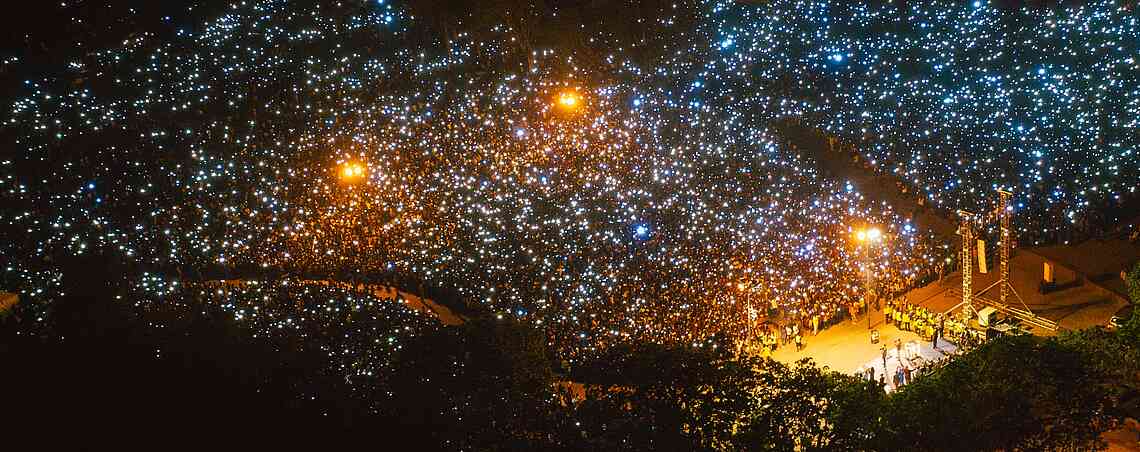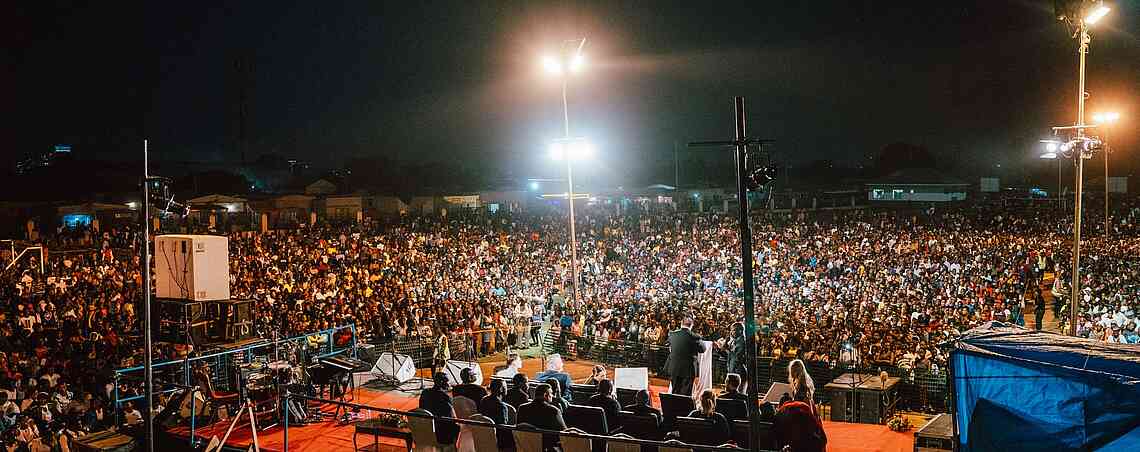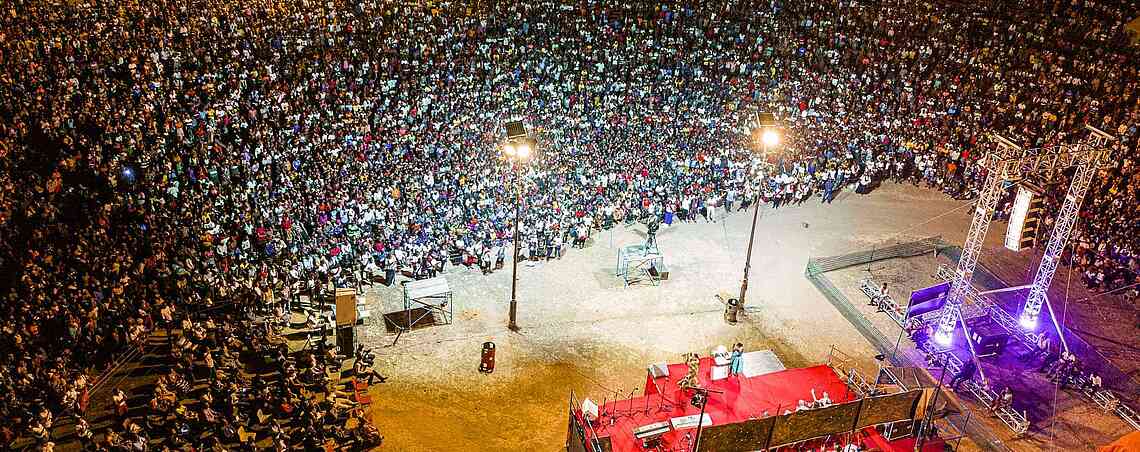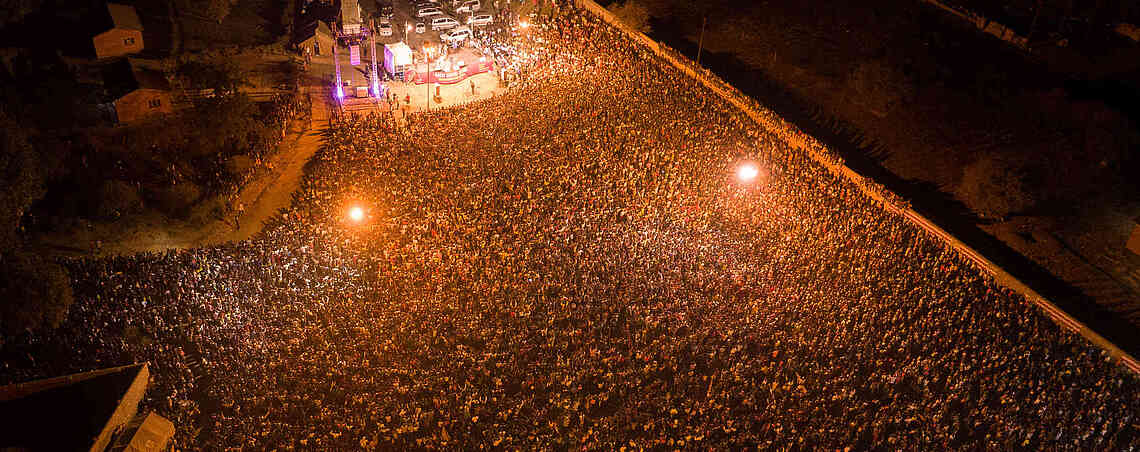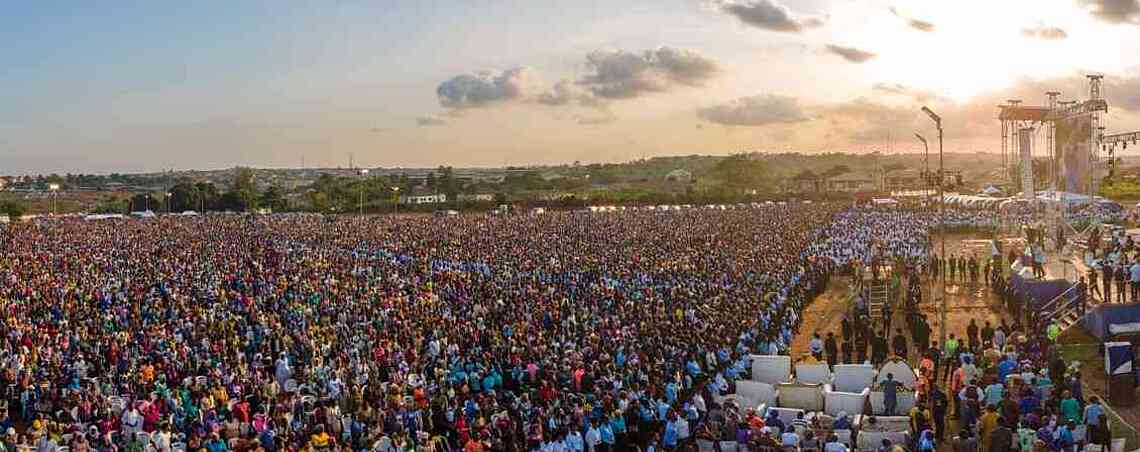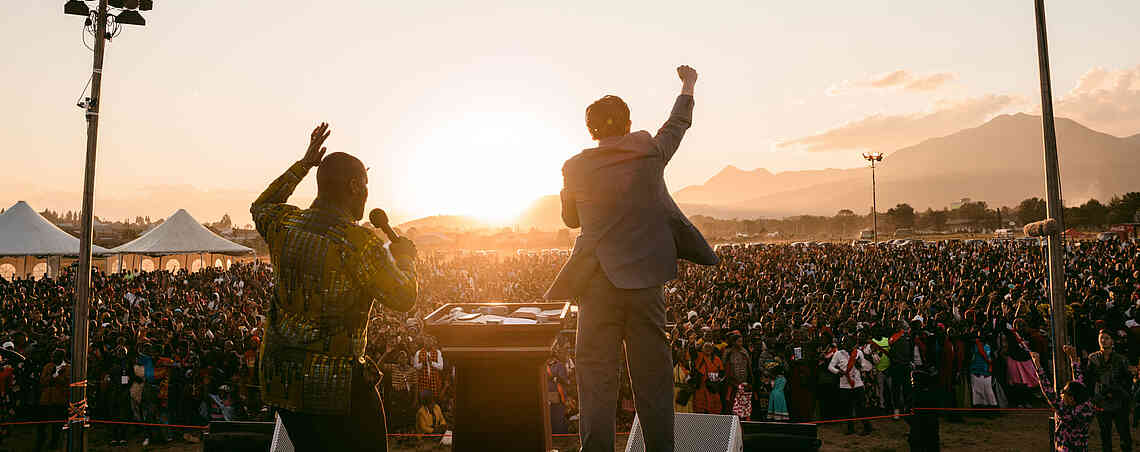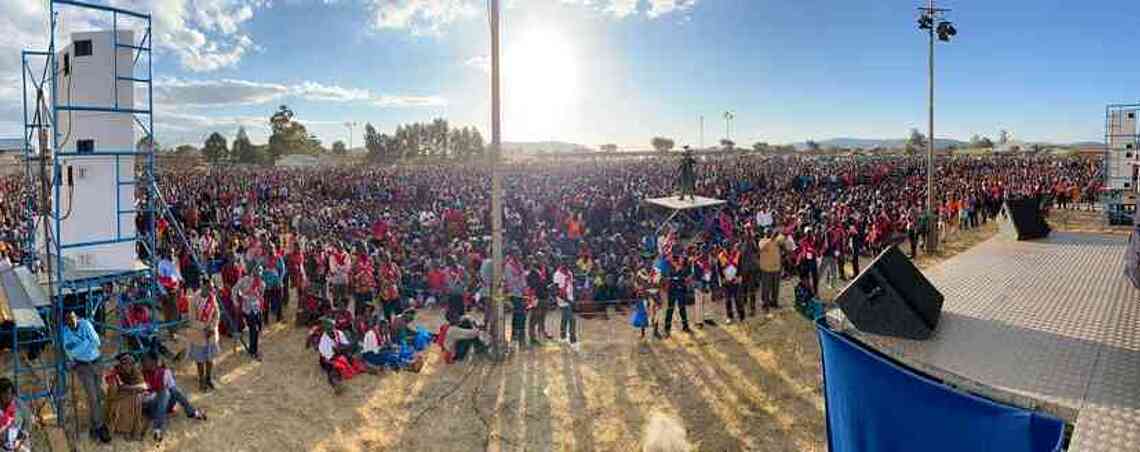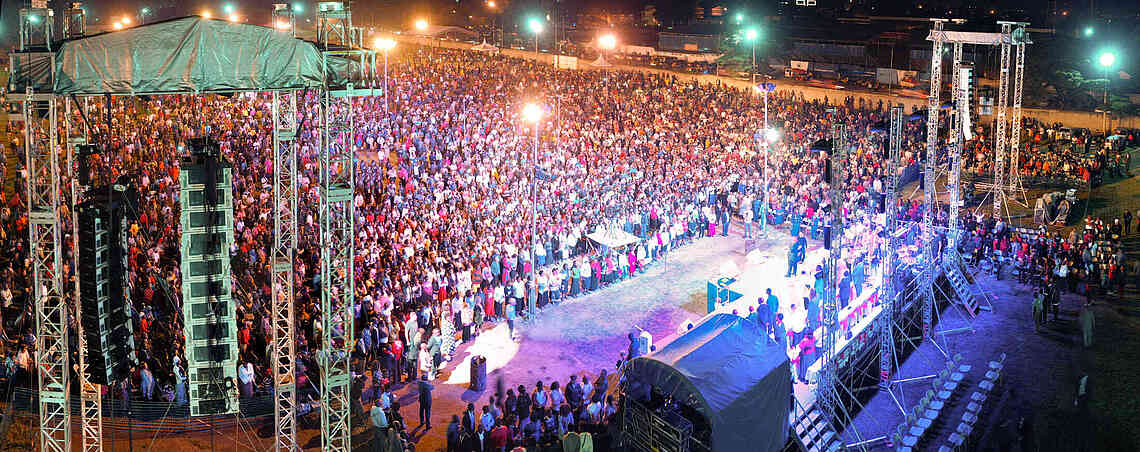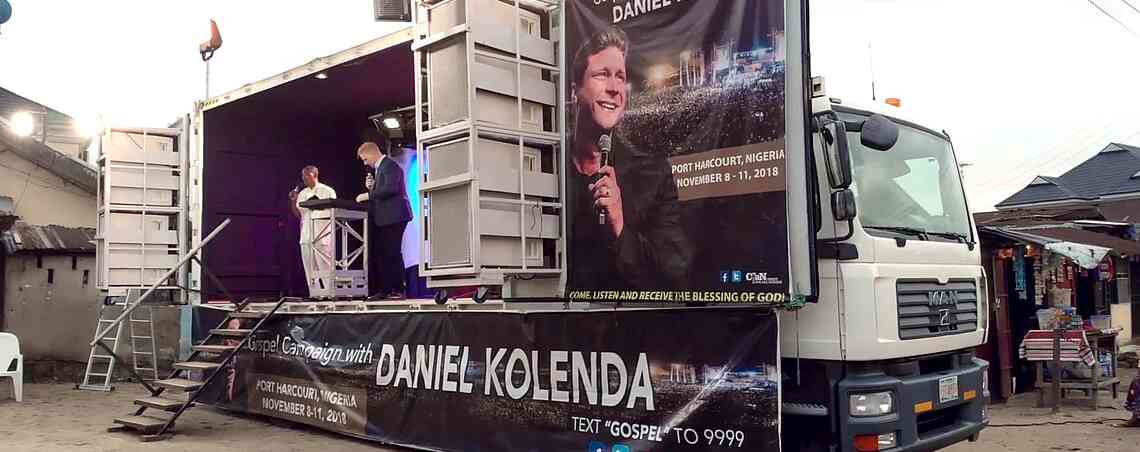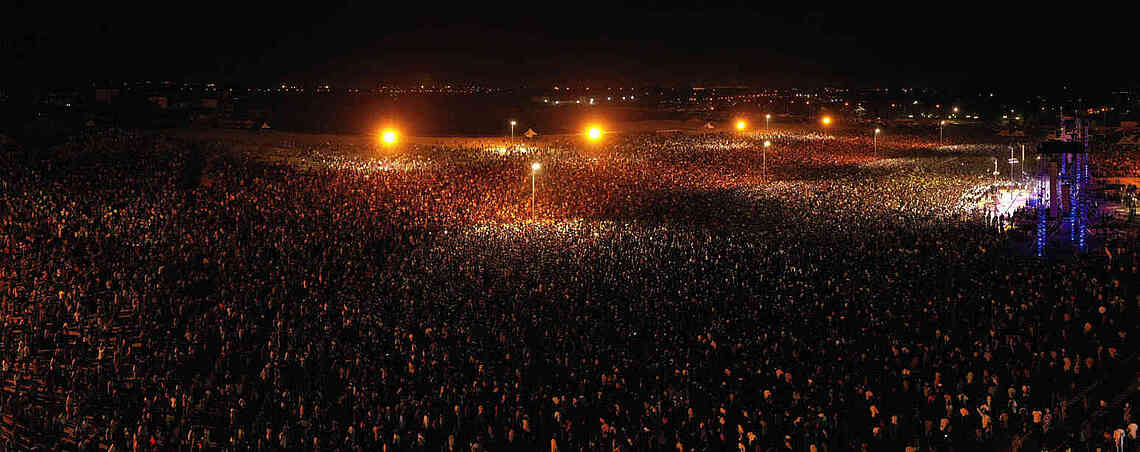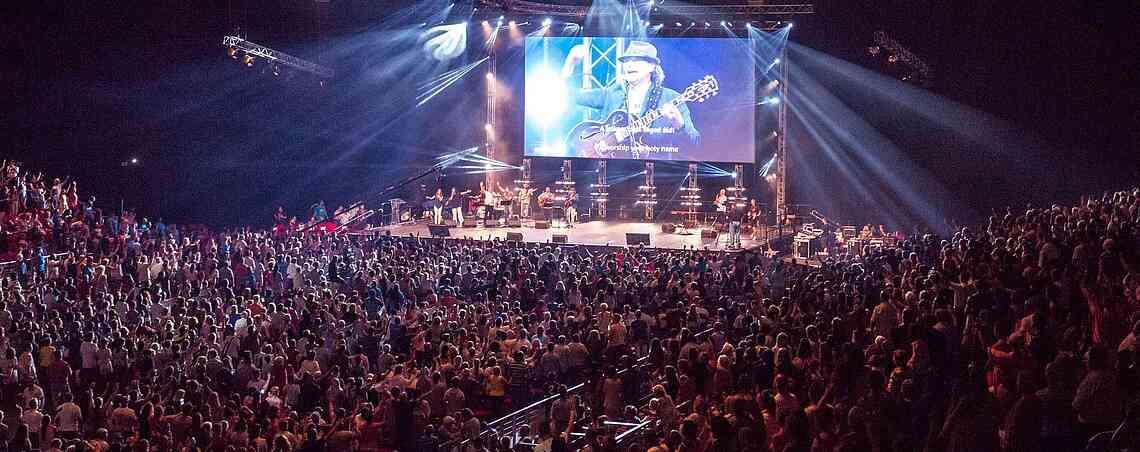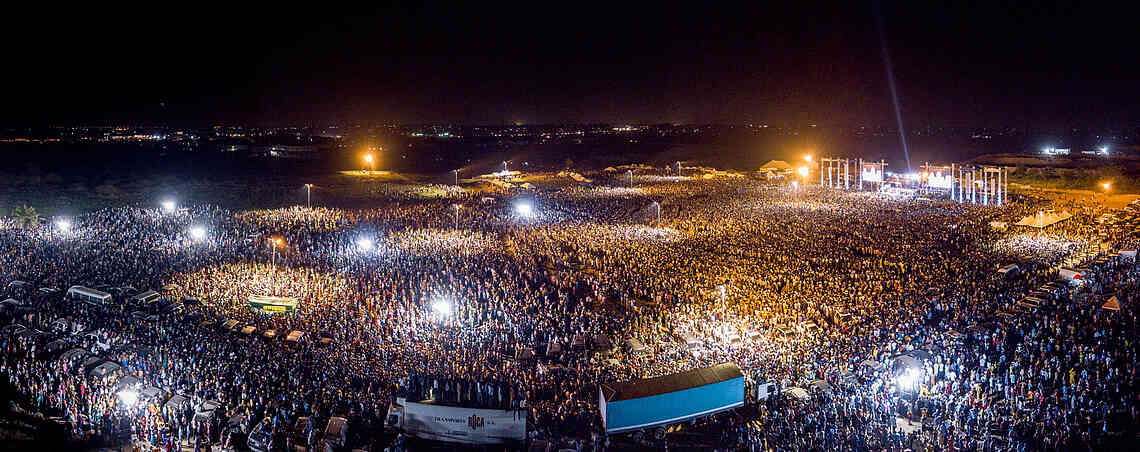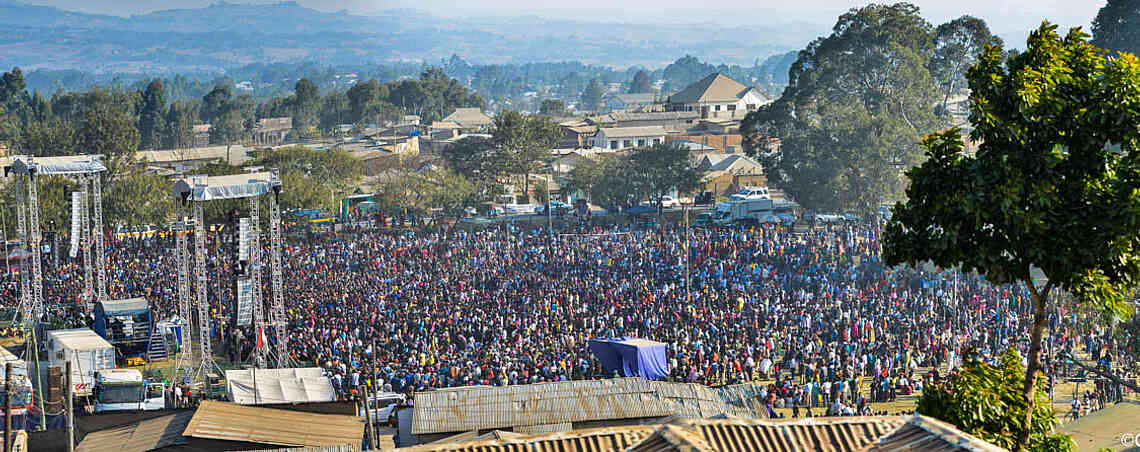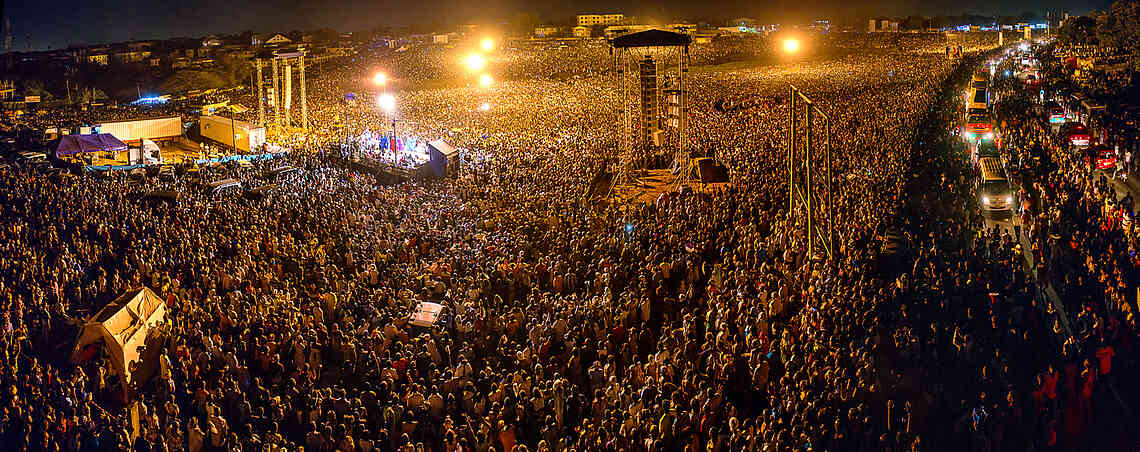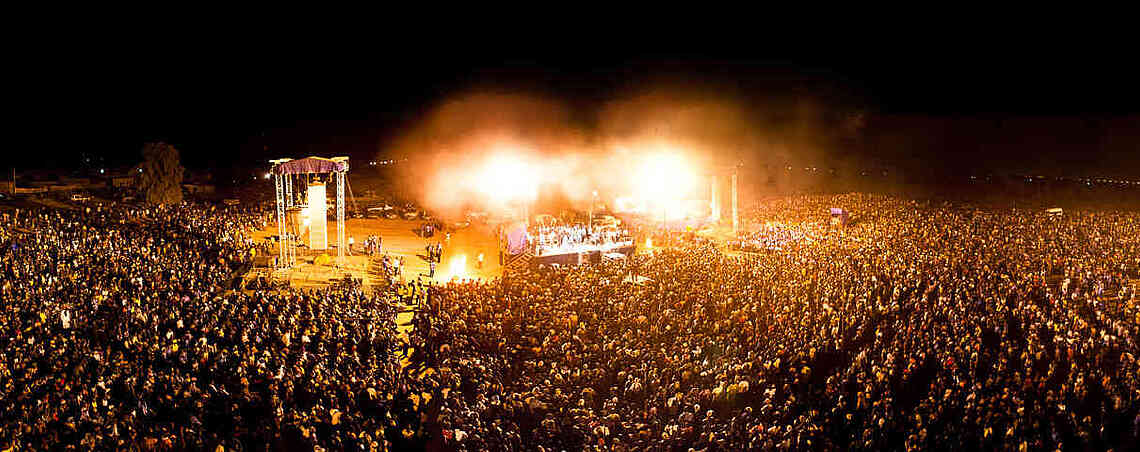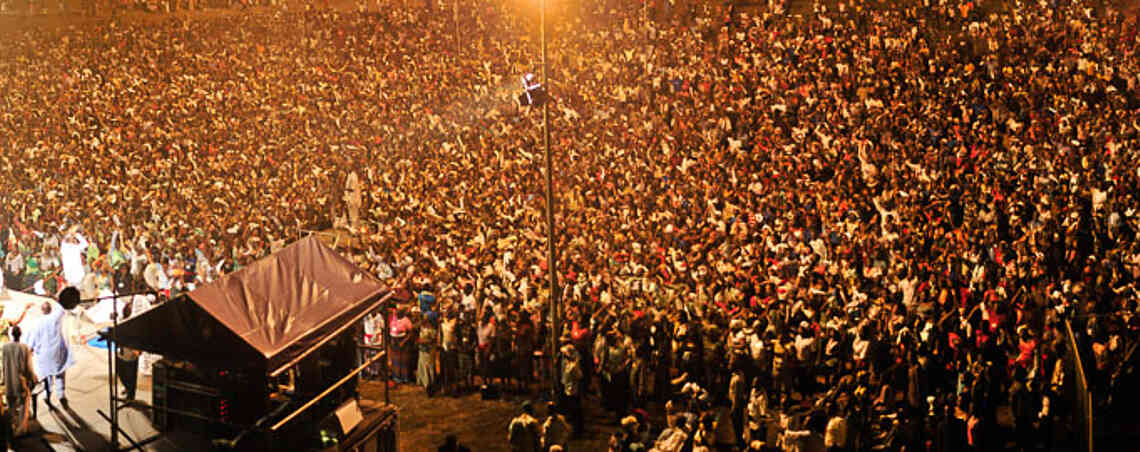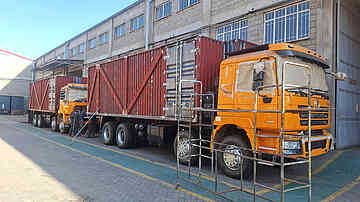In “the land of a thousand hills”
Kigali, Rwanda

In “the land of a thousand hills”
Rwanda is a small, mountainous country in Central Africa known as “the land of a thousand hills.”
Due to its geological structure, it would actually be more accurate to call it “the land of 7000 hills.”
This tropical highland, with its favorably moderate climate, is one of the most densely populated areas in all of Africa.
The Population
About 11.5 million people inhabit this small country, resulting in a population density of 431 persons per square km. It even tops the Netherlands, Europe’s most densely populated nation. Rwanda is comparable in size to the German federal state Rhineland-Palatinate, but has twice the people.
Every woman bears an average of 5 to 6 children. For this reason the government plans to install a "three-children-policy." More than 40% of the population is younger than 15 years, lowering the nation’s average age to 18.7 years. This makes Rwanda an exceptionally young country. The annual population growth is 2.1%. In comparison, France or England grows at 0.5%.
Since there is almost no local industry, the high population density is one of the country’s major challenges. Numerous refugees, mostly from Congo, place an additional strain on Rwanda.
Economy
Rwanda is an agrarian country. Farmers make up around 90% of its workforce. They grow bananas, corn, sweet potatoes, peanuts and cassava – typically for mere subsistence. But the government’s efforts to encourage the cultivation of products for export – such as tea, cotton, sisal, cinchona and especially coffee – have begun to yield results. Considerable progress has been made in stabilizing and reviving the economy. Gross domestic product is increasing at an annual rate of 4 to 5%. Recently natural gas deposits have been discovered that may be some of the largest in the world. The country is, however, still one of the poorest nations in Africa. Rwanda’s main trading partners are the Benelux countries and Germany.
There are also efforts to open the country to tourism. Three national parks contain fascinating flora and fauna, as well as the last remaining mountain gorillas.
History
From 1884 to 1916, Rwanda and Burundi formed the border of the colony called German East Africa. After the First World War, both countries were transferred to Belgium – first as a League of Nations mandate, and then as a United Nations trust territory in 1946. Rwanda became an independent republic in 1962.
But even before then, the tensions between the majority Hutu and minority Tutsi ethnic groups had long-standing roots. Then in April 1994, a plane crash killed the Presidents of Rwanda and Burundi. That event provoked, serious upheaval in Rwanda that escalated into a genocide claiming one million people in just 100 days (it began in the capital, Kigali, which lost around 100,000 people in a matter of weeks). It was an absolute unleashing of demonic powers.
Religion
Over half the population is Catholic, and about 10% is Muslim. As in other parts of Africa, syncretism is widespread. Many still practice indigenous ancestor worship regardless of their religious affiliation. The cult of Ryangombe, for example, is a monotheistic religion with a creator god (Imana) who has an earthly “representative” (Ryangombe). This has been combined with Christian beliefs in an unhealthy mix since the colonial era. Just under one-quarter of the inhabitants are adepts of the ancient nature religions.
Thankfully, since the end of the genocide, Bible-based Christian fellowships and churches have been established and continue to grow. Besides Anglicans, Presbyterians, Methodists and Baptists, these include charismatic fellowships and “revival churches.”
The city of Kigali
The vast city of Kigali is home to just under 1.2 million people. The city was founded in 1907 by the German “Resident,” Richard Kandt, between the valley of the Nyabarongo River and Mounts Jali and Kigali. Today it is Rwanda’s capital, and by far its biggest city. Although Kigali is located just south of the equator, its altitude – between 1,433 meters and 1,645 meters above sea level – gives it a mild climate. The city is located on the Akagera, one of the headstreams of the Nile.
Kigali is one of the safest cities in Africa. Soldiers or police officers are posted at almost every street corner and patrol the streets at night.
The official languages are French and Kinyarwanda, and English is widely understood. The language of business is Swahili.






